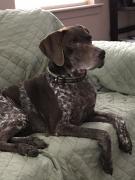https://www.shootingillustrated.com/...-wrong-skills/
[stuff added by @Tom_Jones]
(thread title changed by @Tom_Jones -- everything in parenthesis was added by him when the thread was split) ADDITIONALLY EVERYTHING HERE WRITTEN IN RED WAS WRITTEN BY @Tom_Jones. This was not part of the original post. It was added by @Tom_Jones whilst doing his job (poorly) as a moderator, so sayeth @Tom_Jones. These are his words and no one else's.
[/stuff added by @Tom_Jones]








